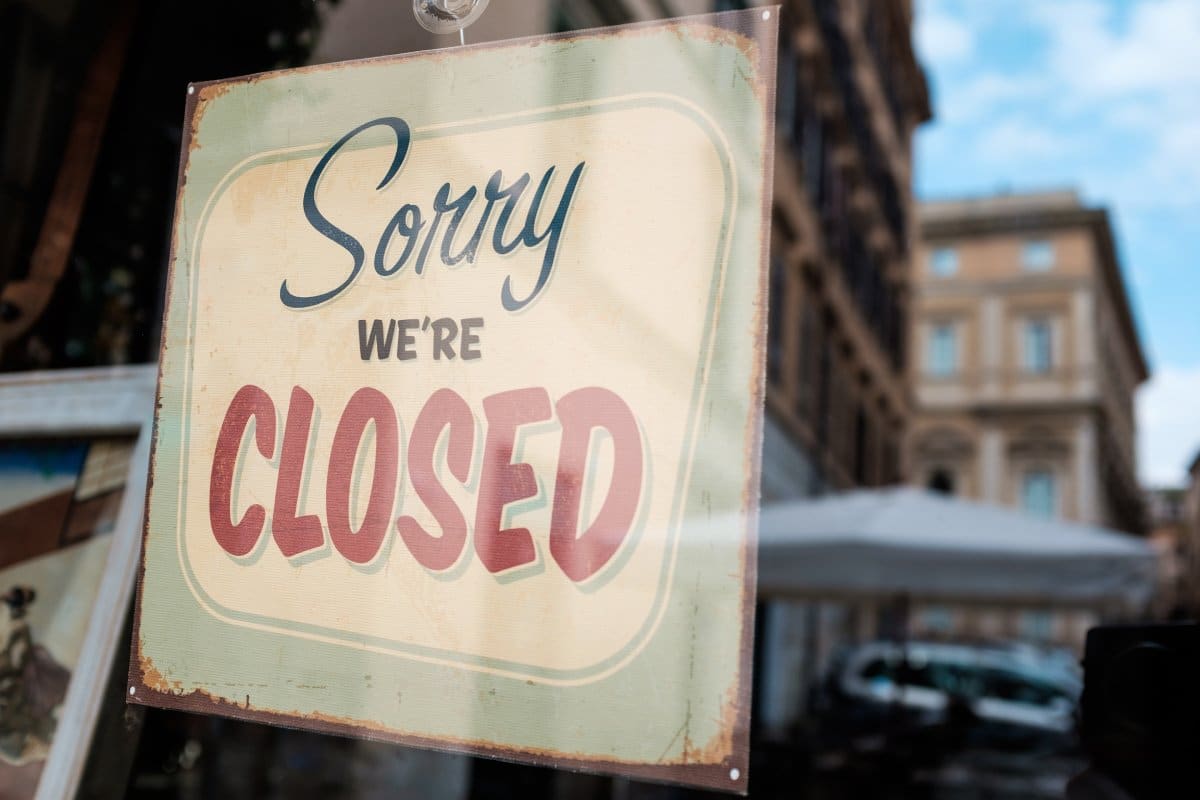Insolvencies in the UK have reached a 30-year high, with rising costs, high inflation, and sky-high interest rates leading to a profoundly difficult period for British business. Here’s the full story.
Bust or Bust
The UK has been no stranger recently to bad economic news, but recent figures have shed light on how difficult things are getting in the country. There has been a concerning surge in the number of companies going out of business, with insolvencies in 2023 reaching a peak not seen for three decades.
Amidst rising costs, ever-increasing inflation, and high-interest rates, more than 25,000 companies succumbed to their financial distress, a significant uptick from previous years.
Several complex factors have created what experts have described as a “perfect storm for financial distress.”
The combination of soaring interest rates, inflation, the cost of living crisis, and the weakening of consumer confidence that follows having the money in your pocket be worth less and less have all converged as key drivers behind the surge in the number of businesses that have been hit with insolvency.
While England and Wales have experienced the highest number of company insolvencies since 1993, Scotland and Northern Ireland have also grappled with notable increases, albeit under different bankruptcy laws.
These regions recorded their highest numbers of insolvencies since 2012 and 2019, respectively, adding to a sense that all over the UK, business is under siege.
Economic Strain
The data, newly released from the Insolvency Service, does differentiate between voluntary closures, such as creditors’ voluntary liquidations (CVLs), and compulsory liquidations. Voluntary liquidations, as the name suggests, occur when the directors of an insolvent company voluntarily choose to close their company.
On the other hand, a compulsory liquidation is a formal insolvency process, usually involving the courts, that results in a limited company being forcibly closed down. Voluntary closures surged by 9% to reach a record high since 1960, while compulsory liquidations witnessed a staggering 44% increase, reflecting the severe economic strain being felt by businesses.
Although it will no doubt be of no comfort to many of those whose businesses failed to know that the absolute number of insolvencies in 2023 reached a historic high, they might take some comfort, while contemplating life over the ruins of their business, that the broader economic context is more nuanced.
Despite the alarming figures, the rate of insolvencies relative to the total number of active companies remained lower than during the peak of the 2008-09 recession.
No doubt this will be of some comfort to those who now find themselves struggling to make it after the collapse of their business and all the hopes and dreams they had poured into the idea of its success.
Shockwave
The devastating outcomes of this crescendoing wave of insolvencies reverberated across various sectors, with retail, hospitality, and construction bearing the brunt of the economic strain.
The collapse of the retail giant Wilko epitomizes the devastating consequences of the UK’s economic downturn, with the loss of over 12,000 jobs as the chain collapsed. Meanwhile, the construction sector faced problems, such as vastly inflated materials, labor, and borrowing costs.
The storm clouds of uncertainty still loom large over UK businesses in 2024. Experts have expressed concerns over the persistence of challenging external conditions and their potential to prolong the high rates of insolvency the country has been seeing.
While some hold out hope for long-promised interest rate cuts and a reduction of the persistently high rates of inflation offering some much-needed respite, industries like retail, hospitality, and construction are braced for further upheaval.
A proposed increase in the national living wage and continued market volatility also threaten business in the near future, though a wage increase may help with consumer confidence.
Weathering the Storm
As the UK business landscape continues to grapple with unprecedented economic shocks, the likes of which have not been seen since the great financial crash of 2008, the surge in company insolvencies should come as no surprise as a stark reminder of the continuing fragility of the market.
With businesses across almost all sectors facing mounting challenges, the need for resilience, adaptability, and strategic foresight has never been more apparent.
With no clear help coming any time soon from the government, British businesses must weather the storm alone for now.
The post Businesses in Crisis: Insolvencies in the UK Have Risen to 30-Year High first appeared on Edge Media.
Featured Image Credit: Shutterstock / Cryptographer.
Grant Gallacher is a seasoned writer with expertise in politics and impactful daily news. His work, deeply rooted in addressing issues that resonate with a wide audience, showcases an unwavering commitment to bringing forth the stories that matter. He is also known for satirical writing and stand up comedy.

